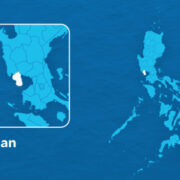Overfished coastal waters: Small fisherfolk’s fight for justice

It questions why, given the country’s vast marine resources, commercial fishing companies—with their most advanced equipment and vessels that can operate well beyond the 15-kilometer municipal waters—insist on encroaching on the traditional fishing grounds of the marginalized fisherfolk.
I believe that municipal waters are still relatively abundant in fish despite widespread overfishing. Hence, commercial fishing persists and can still generate significant profit for operators, especially since the government provides credit assistance programs. Another reason is that commercial fishing operators, as well as the judge and justices who sided with a fishing company, do not fully understand the negative impact of overfishing.
In view of the above, I would like to explain the historical trajectory of fish catches based on data culled from the Philippine Fisheries Profile and Situation. First of all, the maximum sustainable yield has been considered as the foundation for the management of marine capture fisheries. It is defined as the largest catch that can be taken from marine coastal waters indefinitely without depleting the fish stock capable of producing the maximum surplus. Overfishing, which is catching fish above MSY, can lead to a decline in fish stock and the collapse of the fishery.
The Philippine coastal waters have an MSY estimated at 1.9 million metric tons (Barut et al., 1997), a figure close to the recorded fish catch of 1.849 million MT in 2002. The accelerated increase in catches from 2.0 million MT in 2003 to 2.426 million MT in 2010, being above MSY, was therefore considered in the category of overfished status. Such a situation was brought about by the increasing number of commercial fishing vessels (CFVs) and municipal fishing boats (MFBs), from 3,601 and 464,395 in 2003 to 6,371 and 464,394 in 2010, respectively. In 2011, the catch was 2.179 million MT, a drop of 10 percent, with commercial and municipal catches dropping by 16 percent and 3.8 percent, respectively. The high figure indicates that commercial fishing was the primary cause of overfishing, particularly in municipal waters regularly encroached upon by commercial fishers.
Between 2010 and 2024, fish catches underwent a fluctuating downward trend that ended at 1.660 million MT, a drop of 32 percent, along with the reduction in the number of CFVs to 5,090 and MFBs to 375,995, representing drops of 20 percent and 19 percent, respectively. It could mean that the extent of reduction was not enough to reverse the downward trend in catch. Moreover, the combined catches in commercial and municipal fishing during the first semester of 2024 and 2025 declined from .923 million MT to .855 million MT, respectively, a 7.4 percent drop. Therefore, allowing commercial fishing operations in municipal waters could inevitably lead to a further decline in fish catches and the marginalization of fisherfolk.
The above narrative on two decades of overfishing resulted in a scenario best described by the advocacy group, Oceana, where 75 percent of fishing grounds are depleted and 87 percent of the marine fish stock is classified as overfished. Reducing the number of CFVs and MFBs, technically known as fishing effort reduction, to a level commensurate with MSY is a critical, science-based strategy for reversing the trend of overfishing and ensuring a continuous supply of marine fish for present and future generations.
Edmundo Enderez,
edmenderez@gmail.com
For letters to the editor and contributed articles, email to opinion@inquirer.net

















Why inclusive health care is good economics